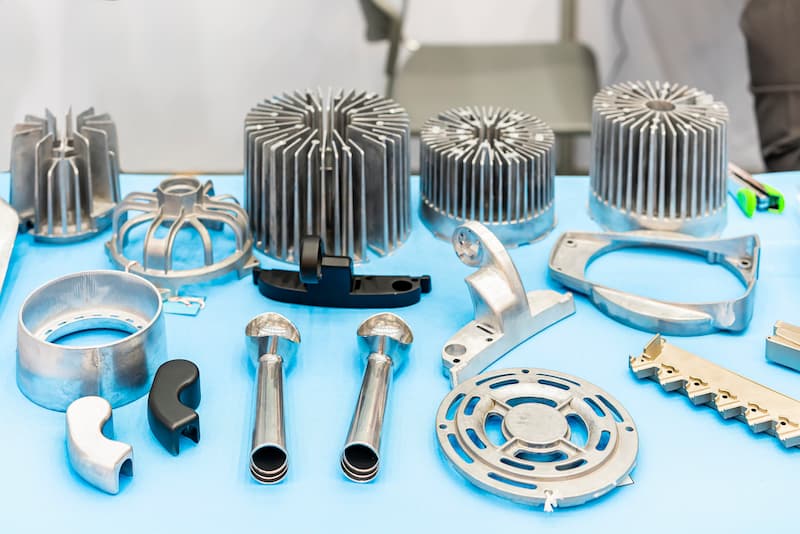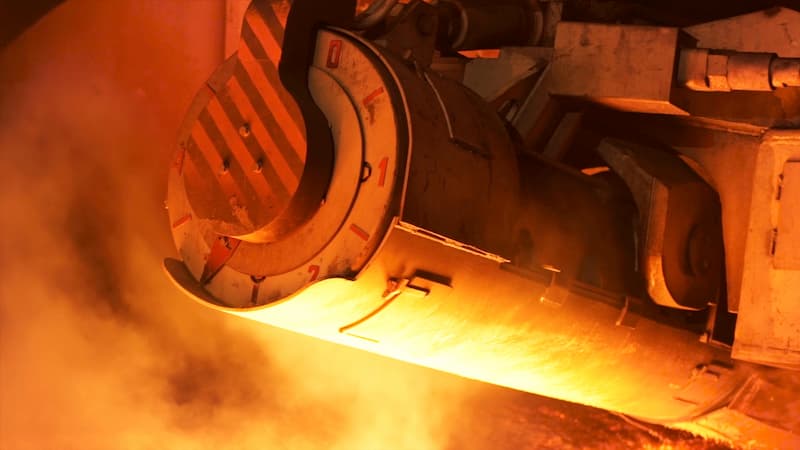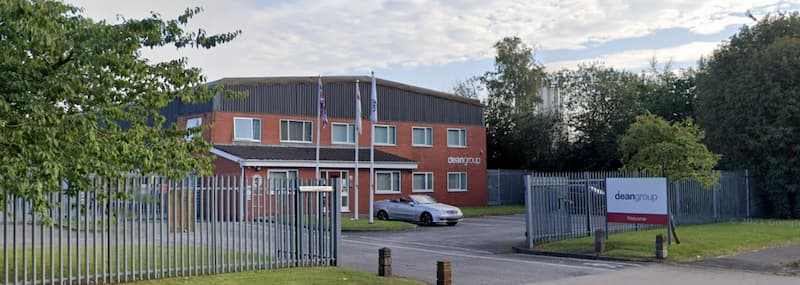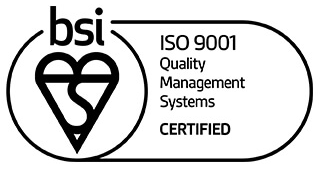Understanding Gravity Die Casting
Die casting is a widely used method in metal casting, making it an essential service at our UK metal foundry. It involves injecting low melting point metals into a custom-made steel die to create complex and precise shapes with high dimensional accuracy.
General die casting offers many advantages, such as rapid production, excellent surface finish, and the ability to cast a variety of low melting point metals. Sometimes, the required castings will need more specialised operations to get the quality we need; this is where gravity die casting comes in. Read on to learn more about this specialised form of metal casting.

What Is Gravity Die Casting?
For gravity die casting, we provide low-cost outsourcing to reputable suppliers in Asia to create high-quality components using this unique approach. Unlike other casting methods, gravity die casting involves simply pouring molten metal into a specially designed die, a reusable mould, that provides the desired shape and structure to the cast component.
What Makes Gravity Die Casting Unique?
So, what makes gravity die casting unique compared to die casting? Die casting uses the high pressure a hydraulic press generates to push the metal into the mould, which results in a better-quality finish. Whilst this provides many manufacturing benefits, such as a higher quality product, it requires significant initial costs.
Gravity die casting simply uses gravity for its product creation and is perfect for cheaper and less exacting designs whose projects have longer lead times.
The steel dies used in die casting are tooled to the design's specific requirements with additional costs. In comparison, the dies used in gravity die casting are reusable, which reduces production costs. These costs can be reduced even further by implementing our rapid casting prototyping service.

The Gravity Die Casting Process
Preheating
The gravity die casting process utilises the previously mentioned specially designed die and is preheated to over 150°C before the casting begins. This preheating ensures that the molten metal flows smoothly and evenly into the mould.
Additional Prep: Lubricating or Adding a Core
Before heating, the cavity may be coated with a lubricating release agent to prevent the casting from sticking. If necessary, a core made from either metal or sand is inserted into the mould at this stage. The core allows for creating more complex designs and provides greater flexibility during the casting process.
Gravity Assisted Pour
Once the die halves are clamped together, the molten metal is poured into the mould, allowing it to fill the cavity. As the metal cools and solidifies, it takes the shape of the die, forming the desired component. Due to the use of hardened steel moulds, the cooling process is relatively quick, resulting in strong, ductile parts with a fine grain structure.

Benefits of Gravity Die Casting
One significant advantage of gravity die casting is the ability to produce components with smoother surfaces compared to other die casting methods. For the best surface finish, you should choose investment casting, but this process requires significantly longer lead times than gravity die casting, which may eliminate it as a viable option depending on the needs of your project.
Improved Quality with Rapid Venting
The pouring of the molten metal allows for rapid venting, reducing trapped gas within the mould and improving casting integrity and surface finish. Additionally, the slower pouring speed of gravity casting minimises the risk of folding over the metal, a problem associated with the critical meniscus velocity in other casting methods.
Greater Design Flexibility
This casting method also provides greater design flexibility, supporting alloys such as brass, zinc, magnesium, and Mazak. While it may not suit metals with higher melting points, gravity die casting can produce components with intricate shapes and thinner sections.
Efficient Material Usage
This process allows for efficient material usage, reducing waste and minimising the overall cost of production. The gravity-driven flow of molten metal ensures consistent mould filling, resulting in excellent dimensional accuracy and reduced post-processing requirements.
Superior Surface Finish
This casting method’s superior surface finish is unparalleled compared to other casting methods. The smooth cavity fill ensures minimal porosity and excellent surface quality, requiring less finishing work and delivering high-quality end products.

Why Choose Gravity Die Casting?
When considering the most suitable casting process for a project, we consider factors such as quality requirements, surface finish, complexity, and mechanical properties. Gravity die casting is ideal for shorter but still more reasonable production runs compared to other methods, but it should be noted that whilst pressure die casting has significantly more expensive start-up costs and economies of scale, gravity die casting is not too dissimilar in batch size comparatively. It also offers a lower initial tooling cost and can accommodate a wider range of alloys.
Gravity die casting offers a reliable solution whether you require automotive, aerospace, or any other industry components. Its versatility extends to a wide range of casting materials, including aluminium alloys, brass, and copper, producing parts with excellent mechanical properties and strength.

Gravity Die Casting at Dean Group
At Dean Group, we have extensive expertise in gravity die casting and have successfully utilised this process across various industries and applications.
The key to our success with this process involves our uniquely efficient system for 3D printing for metal casting. Our team utilises advanced CAD technology to create 3D models of components and conducts flow simulations. Following successful simulations, the model is then used to create the tool, which may incorporate an ejector system.
We take pride in delivering high-quality gravity die casting services that meet our clients' specifications. To learn more about our gravity die casting process or to receive a quote for your project, contact us today.
Registered in England VAT No: 146307478 Company Registration No: 1062820




